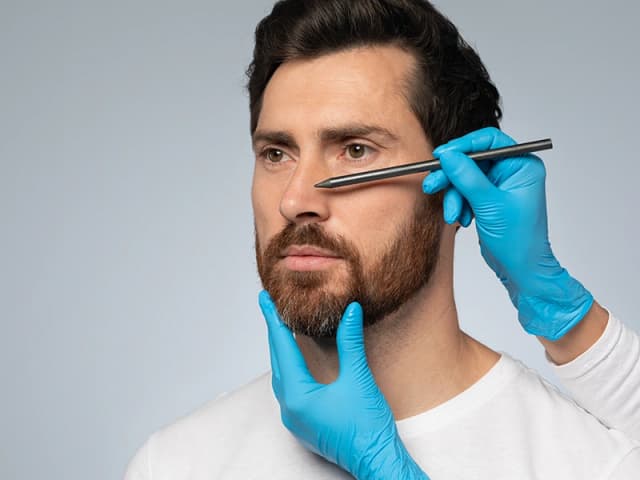Deciding to have a face mole removal can feel daunting, especially if you're dealing with painful moles, but understanding what to expect can make the process easier. This guide will walk you through everything you need to know about a mole removal procedure with Dr. Ardesh, from the initial consultation to post-procedure care, ensuring you feel confident and informed.
Mole Removal with Dr. Ardesh: What To Expect
Consultation
Your mole removal appointment starts with a consultation. Dr. Ardesh will examine the mole and discuss any concerns. Providing a complete medical history, including any family history of skin cancer, helps Dr. Ardesh assess the risk and decide the best approach. This is a good time to ask any questions you have so that you feel comfortable with the procedure.
Preparation
Follow any pre-procedure instructions given by Dr. Ardesh, such as avoiding certain medications. Having someone accompany you can be reassuring, especially if anesthesia is involved. However, most moles can be removed using a local anesthetic.
The Procedure Itself
The exact mole removal method used by Dr. Ardesh will vary, but generally will follow these steps:
- Shave Excision: Moles removed with shave excision involves Dr. Ardesh shaving the mole off the skin’s surface. This is ideal for shallow moles.
- Laser Removal: Dr. Ardesh sometimes uses concentrated light to break down a mole’s pigment over multiple sessions (depending on the size of the mole).
- Surgical Excision: Dr. Ardesh will surgically remove a mole when it is deeper or potentially suspicious.
These procedures are usually quick, lasting 15 to 30 minutes. You might feel slight discomfort from the anesthetic, but the removal is typically painless. Afterward, Dr. Ardesh will provide you with detailed mole removal aftercare instructions to ensure proper healing.
After the Mole Removal Procedure
Post-Procedure Care
Proper care is important after mole removal to help your skin heal and prevent complications. After the mole removal, Dr. Ardesh will apply an antibiotic ointment and cover it with a sterile bandage. You will need to keep the area clean and dry in the days following the procedure.
Recovery Process
Expect some redness and swelling after the procedure. Over-the-counter pain relievers can help with discomfort. The recovery time varies, but the wound should heal within a few weeks or less. Watch for signs of infection, such as excessive redness, pus, or fever, and contact your healthcare provider if these occur.
Monitoring the Skin
Regularly check the area where the mole was removed for any changes. Staying vigilant helps catch any signs of skin issues early, improving the chances of successful treatment.
What is Mole Removal?
Moles are growths on the skin that can be present from birth or develop over time due to sun exposure. While most moles are harmless, you might choose to have cosmetic mole removal due to concerns about skin cancer.
As mentioned, the exact mole removal procedure used by Dr. Ardesh will vary based on the mole’s characteristics. Shave excision involves using a blade to carefully remove the mole and some surrounding tissue. Laser removal uses focused light to break down the mole’s pigment, often requiring multiple sessions. Surgical excision is used for deeper or suspicious moles (which could include an abnormal mole/atypical mole), where the mole and some surrounding tissue are removed.
Mole Removal and Skin Cancer
Sometimes moles can be linked to skin cancer, with benign moles having the potential to turn into melanoma, the most dangerous type of skin cancer. Moles that change in shape, color, or size should be closely monitored.
Dr. Ardesh, known as The Mole Doctor TM and The Beauty Mark Doctor TM, can assess abnormal moles and determine if a biopsy is necessary to evaluate cancerous cells. Early detection and mole removal are crucial in reducing the risk of developing skin cancer. Additionally, regular skin checks are important for catching suspicious moles early. The ABCDE rule can help you identify potential concerns: Asymmetry, Border irregularities, Color variations, Diameter larger than 6mm, and Evolution in appearance. If you notice any of these signs, consult with The Mole Doctor TM and The Beauty Mark Doctor TM right away.
Ready to discuss mole removal? Schedule your consultation with Dr. Ardesh today and take the first step towards feeling confident and secure about your skin health.




